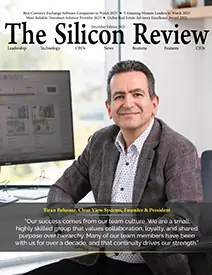>>
Industry>>
Environmental sustainability>>
Silent Infiltration: Airborne ...Silent Infiltration: Airborne Micro plastics Now Detected inside Crop Leaves
The Silicon Review
15 April, 2025
In a startling scientific development, researchers confirm that airborne micro plastics can infiltrate plant tissue—raising serious concerns for agriculture, supply chains, and public health.
New scientific findings have revealed that airborne micro plastics—once thought to primarily impact oceans and animal life—are now being absorbed directly into the leaves of terrestrial plants, including crops. In controlled greenhouse studies and environmental field observations, researchers found microscopic plastic particles embedded deep within plant leaf tissues, bypassing traditional barriers through stomatal openings. This quiet infiltration introduces a disruptive and largely underreported risk to food systems, ecological health, and long-term industrial supply chains. The implications are multifaceted. For agritech companies and industrial automation leaders, this revelation may prompt immediate reconsideration of filtration technologies, smart farming protocols, and sustainability compliance models. Industrial-scale growers now face a new form of contamination—one not mitigated by washing or surface treatment. The plastics, mostly polypropylene and polyethylene, are small enough to be transported by air currents and may enter growing environments from urban centers, manufacturing zones, or even clothing fibers released into the atmosphere.
This discovery is more than an environmental footnote—it signals a future where food quality audits and environmental monitoring systems will need to detect not only pathogens and pesticides, but synthetic polymers embedded within plant tissue. As industrial automation increasingly intersects with smart agriculture, the demand for AI-driven detection systems and micro-contaminant sensors is expected to rise sharply.
Executives overseeing environmental sustainability, food production, or supply chain integrity must now account for a previously overlooked threat. The strategic shift will require accelerated investment in clean-air infrastructure around greenhouses, localized air filtration in cultivation zones, and new policies regulating airborne plastic output. With no clear mitigation path yet established, this micro-scale infiltration demands urgent attention from both industry and regulators.


_2025-11-17_06-38-14.webp)

 (1)_2025-10-21_13-35-14.webp)

_2025-10-02_10-21-48.webp)